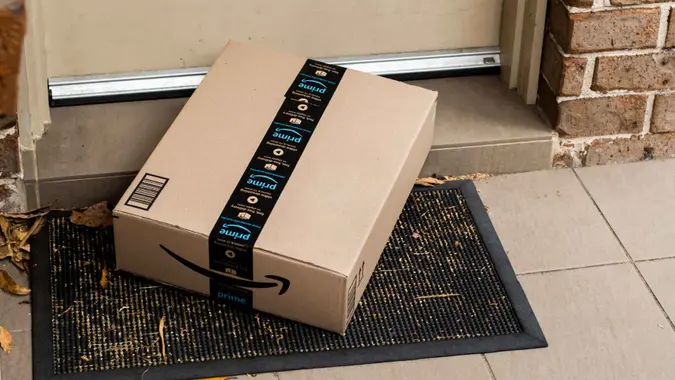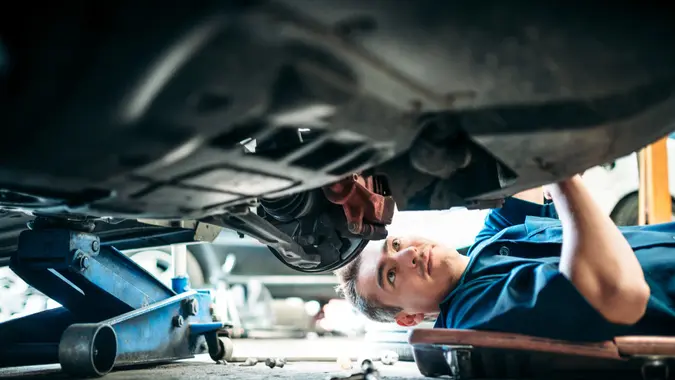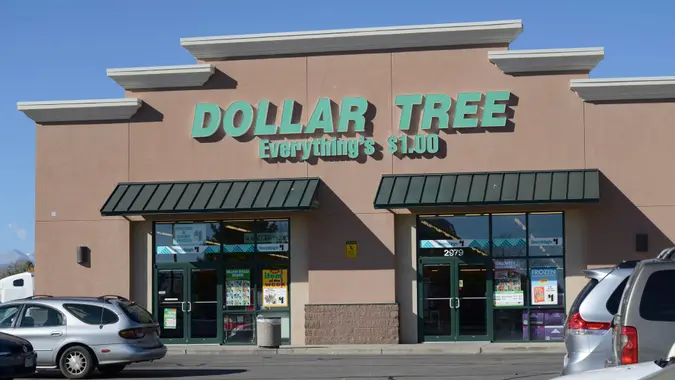5 Renovation Grants So Retirees Can Make Home Upgrades Without Depleting Savings

Commitment to Our Readers
GOBankingRates' editorial team is committed to bringing you unbiased reviews and information. We use data-driven methodologies to evaluate financial products and services - our reviews and ratings are not influenced by advertisers. You can read more about our editorial guidelines and our products and services review methodology.

20 Years
Helping You Live Richer

Reviewed
by Experts

Trusted by
Millions of Readers
Unless you plan to do a lot of travel, retirement is a time when you will probably spend more time in your home than ever before.
As retirees adapt to a new way of living, and changing health and mobility needs, many also begin to see a need for renovations and remodeling of their homes.
According to the National Association of Home Builders, the homeowners most likely to request “aging-in-place” projects are 65 and older, followed by those 55 to 64, who are planning ahead.
Such renovations are not typically cheap, according to Retirement Living. The average cost to widen a shower, for example, is $5,000, while the average cost to install a ramp is $1,100. For more significant changes, like adding an elevator, you could be looking at $45,000.
What are retirees to do if they need to make important renovations to age-in-place but don’t want to deplete their retirement savings?
They may be able to look to some grants and funding sources designed to help seniors at lower income levels.
USDA Rural Development Housing Repair Loans and Grants
The U.S. Department of Agriculture (USDA)’s Rural Development office offers single-family housing repair loans and grants to homeowners who are age 62 and older in eligible rural areas (check the website to determine rural eligibility).
Additional eligibility requirements include that you are the homeowner still occupying the house and unable to afford credit elsewhere. You also need to have a low enough household income that will be determined by your specific state and county.
Maximum loans are $40,000 and maximum grants are $10,000, which can be used for improvements or renovations that make your home safer, more accessible or remove health and safety hazards.
Weatherization Assistance Program
Another government program available for grants and loans is the The U.S. Department of Energy (DOE)’s Weatherization Assistance Program (WAP). This is aimed at helping low-income households reduce energy costs through improved energy efficiency.
Though eligibility varies from state to state, on average, to qualify, your households must be at or below 200% of the national poverty income guidelines, or you must receive Supplemental Security Income.
Though this is a national program, your actual application and resulting grants would come from your local weatherization program.
Habitat for Humanity’s Home Repair Program
The nonprofit organization Habitat for Humanity offers their Home Repair Program to low-income homeowners. Eligibility is not age dependent, but it is income dependent.
Eligible participants must have a household income that is no more than 80% of your area median income (though they don’t count your home value into that).
Grants and loans will vary and can encompass a wide variety of repairs and adaptations for such things as:
- Plumbing or electrical work
- Water heaters
- Replacing roofing, flooring, windows, and doors
- Accessibility modifications like conversion of a bath to a walk-in showers, door widening, wheelchair lifts, and ramps
- Repairs to address individual health wellness issues
- Mitigation of pollutants such as dry rot, mold and lead
- Siding and painting
- Fencing and gates
- Exterior drainage issues
- Replacement of appliances
Start by contacting your local Habitat for Humanity office.
Home Improvements/Structural Alterations (HISA) for Veterans
These grants are provided specifically to U.S. veterans or servicemembers who need to make improvements to their homes for medical necessity or accessibility. These can include renovations that improve access to:
- Entrance to and exit from a primary residence
- Bathrooms and sanitary facilities
- Kitchens or bathroom sinks
- Paths or driveways in the home’s immediate area
- Improve plumbing or electrical systems required by other medically-necessary additions
Specially Adapted Housing Grant For Veterans With Disabilities
If you are a veteran who owns or will soon own a home, and you have a qualifying service-related disability, you may qualify for one of these grants.
The qualifying service-connected disabilities include:
- Loss of limb or loss of use of more than one limb
- Loss of a lower leg or loss of use of a lower leg along as related to a disease or injury
- Loss of a lower extremity (foot or leg), which requires the use of braces, crutches, cane or wheelchair
- Blindness in both eyes
- Severe burns
These grants are fairly limited, but eligible recipients may obtain up to $117,014 as of 2024.
Do Your Own Research
There may be additional grants available at your state and county level, so do your research. Remember that in almost every case you will need documented proof of things like:
- Your age
- Identification
- Income
- Assets
- Homeownership
As well as, for more specific grants:
- Physical disability or medical necessity of a repair (which may require a doctor’s letter)
- Veteran status
Be sure to read all eligibility requirements before applying.
More From GOBankingRates
 Written by
Written by  Edited by
Edited by 

























